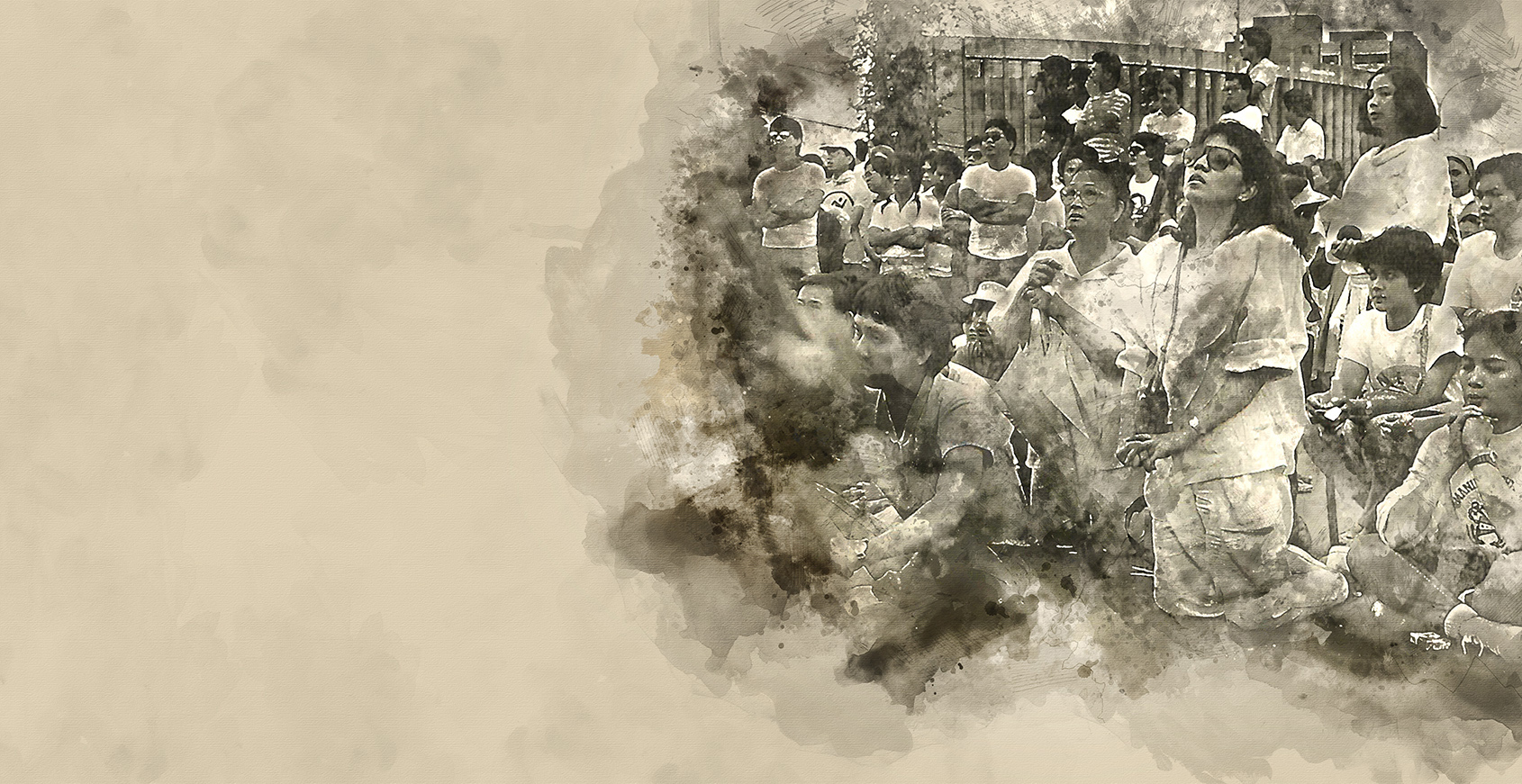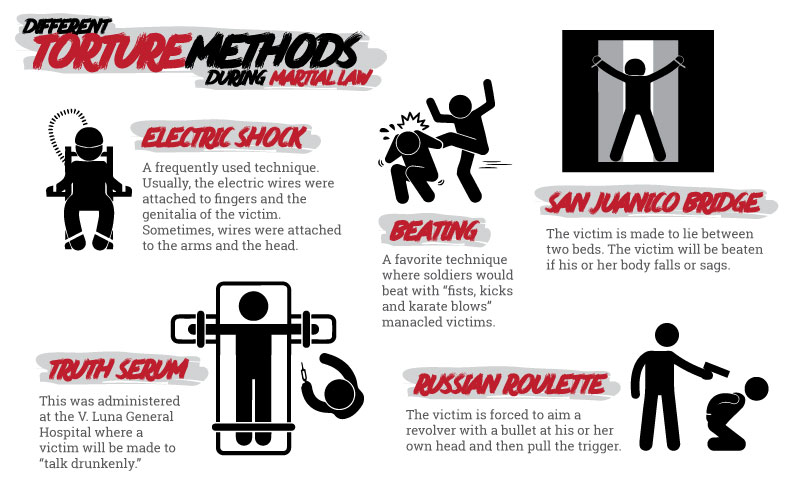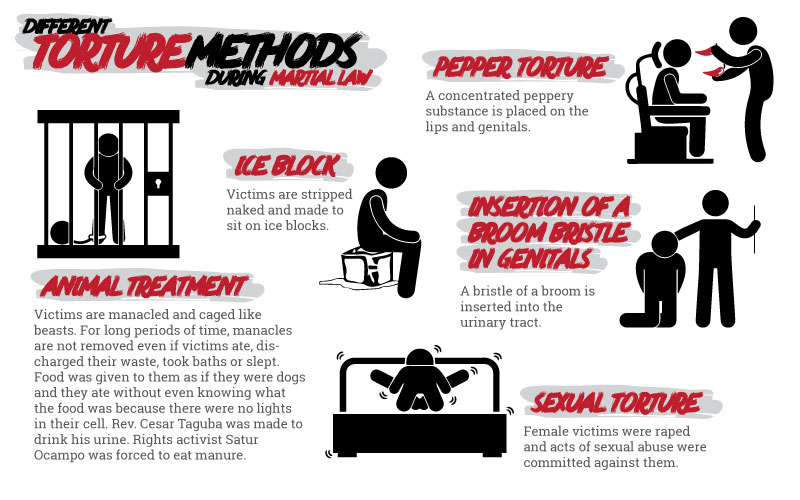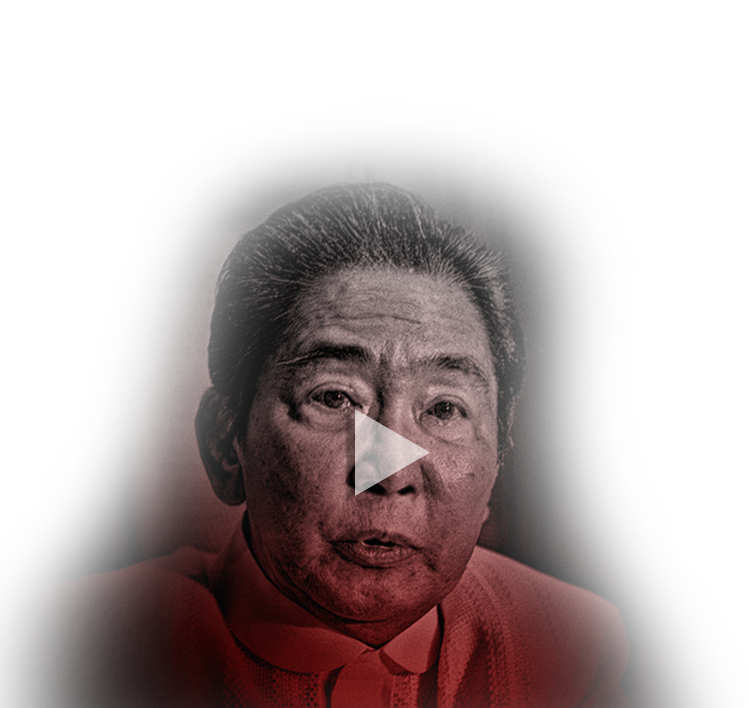Among the nostalgias that Martial Law evoked was the peace and order during that period. Some remember an era of discipline and argue that only those who did not abide by the law got punished. But historians and human rights victims remember an era of impunity.
Ferdinand Marcos signed Proclamation No. 1081 declaring martial law on Sept. 21, 1972. Two months earlier, the entire island of Luzon was placed under a state of calamity after being hit by Typhoon Gloring. Economic uncertainty loomed. Gas prices were rising, strikes and rallies abound and there was the double threat of rebellion by the New People's Army and secession by the Moro Islamic Liberation Front.
The country was in crisis, according to historian and University of the Philippines Third World Studies Director Ricardo Jose.
Marcos cited the communist rebellion as the reason behind the proclamation—though it was contested that the police and Armed Forces could still quell the rebels even without it.
Martial law was established to try to restore order, and it seemed to succeed for the first couple of years.
"Well to put it properly, I was in high school during Martial Law. I was in second year high school in 1972. It seemed peaceful for the first few years maybe the first four or five years because there was censorship going on, because people were willing to give it a chance actually, because it was so different from the pre-Martial Law days where you had all the rallies going on," Jose said.
Once martial law was in full effect, Marcos ordered the arrest of people he considered as threats—Sens. Benigno Aquino Jr., Jose Diokno, Francisco Rodrigo and Ramon Mitra Jr., and journalists Joaquin Roces, Teodoro Locsin Sr., Maximo Soliven and Amando Doronila.
The military had closed down mass media, banned incoming overseas calls and stopped flights.
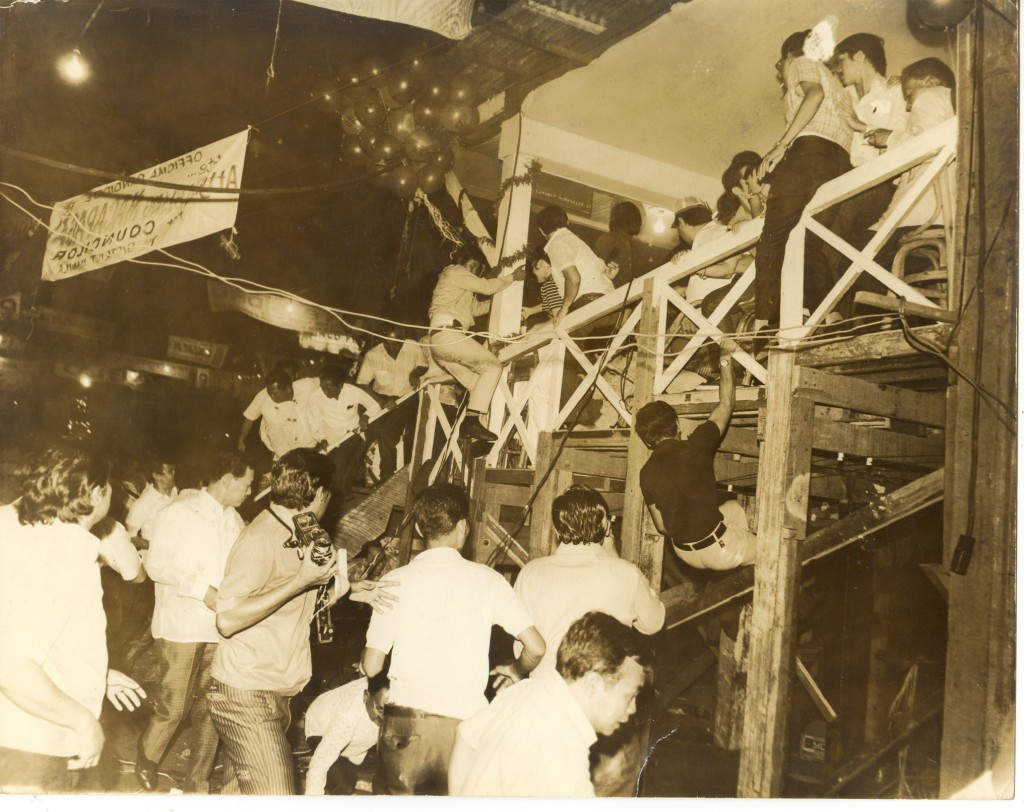
Photo courtesy of the Gerry Roxas Foundation.
All powers were transferred to the president, curfew was imposed and assemblies were forbidden. With the censorship, then University of the Philippines student Boni Ilagan and his companions, journalist Jose Lacaba and university professor Dolores Stephens Feria, came up with an underground publication.
"I think yun yung isa sa una naming ginawa noon. Yung kontrahin yung kondisyon na yun ng suppression ng expression at saka i-articulate yung sentiment ng tao. So we did very early during Martial Law, we did come up with an underground publication," Ilagan said.
Such actions did not sit well with authorities. At dawn in April 1974, members of the Philippine Constabulary's intelligence unit, then headed by former President Fidel Ramos, arrested the three and brought them to Camp Crame. Ilagan was subjected to excruciating torture and detained for over two years.
"Tuluy-tuloy ang torture. In fact, parang desensitized na kahit 'yung mga civilian employees ng opisina. Kasi pag nakaupo kami sa isang sulok, 'pag may dumaraan na sundalo either naka-uniform o naka-civilian at nakatingin sa amin at nalaman na kami ay detainee susuntukin kami, sisipain kami. No questions asked, parang 'yung inaano ka dine-dehumanize ka. Sinisira ang iyong morale," Ilagan said.
One of the torture methods he was subjected to was the "San Juanico bridge," in which he was made to lie between two cots with his nape resting on one and his feet on the other. In this torture method, a victim is beaten if his or her body sags or falls down.
Minsan nakita ka lang doon sa rally, hindi ka naman talaga kasali, napadaan ka lang, puwede ka hulihin.
It wasn't only those opposing the dictatorship who were arrested, but civilians, too.
"Nung panahon ng Martial Law, especially mga unang taon ng Martial Law, listahan lang yan e na nilalabas. Hindi siya warrant of arrest so minsan nasa listahan ka aarestuhin ka hindi mo alam kung ano ang iyong kaso," historian Michael Charleston Chua said.
"Or minsan nakita ka lang doon sa rally, hindi ka naman talaga kasali, napadaan ka lang, puwede ka hulihin... At siyempre kapag ikaw ay 'di nagustuhan ang mukha mo ng militar, puwede ka ng kunin lang, kasi suspendido nga ang tinatawag na writ of habeas corpus," he added.
The writ of habeas corpus is the legal remedy protecting citizens from unlawful arrests and indefinite detentions. Summary executions and extrajudicial killings also proliferated during the period. It was during this time that the word salvage, which originally means to save, became part of the local language to denote extralegal killings.
Lacaba, in an online thread discussing Filipino words in the Oxford English Dictionary, attributed the change in meaning to the words visual similarity to the Tagalog word salbahe which means naughty or abusive. Salbahe is derived from the Spanish word salvaje which means savage.
Chua related accounts from people who lived during the period saying there were lots of instances where bodies would be discovered in rivers. Bodies of suspected rebels would also be lined up at the plaza to scare away dissidence.
Chua said it was uncertain if the killings were done by the military or by vigilantes. He said that although not all of the killings perpetrated at that time were ordered by Marcos, a climate of fear and impunity prevailed, which emboldened some to commit summary executions as they could get away with it scot-free.
"Kaya oo totoo 'yun na hindi lahat ito ay kagagawan ni Pangulong Marcos mismo pero nabigyan niya ng kapangyarihan yung mga nagpatupad nito na umabuso dahil walang nakulong dahil sila'y nag-tortyur," he said.
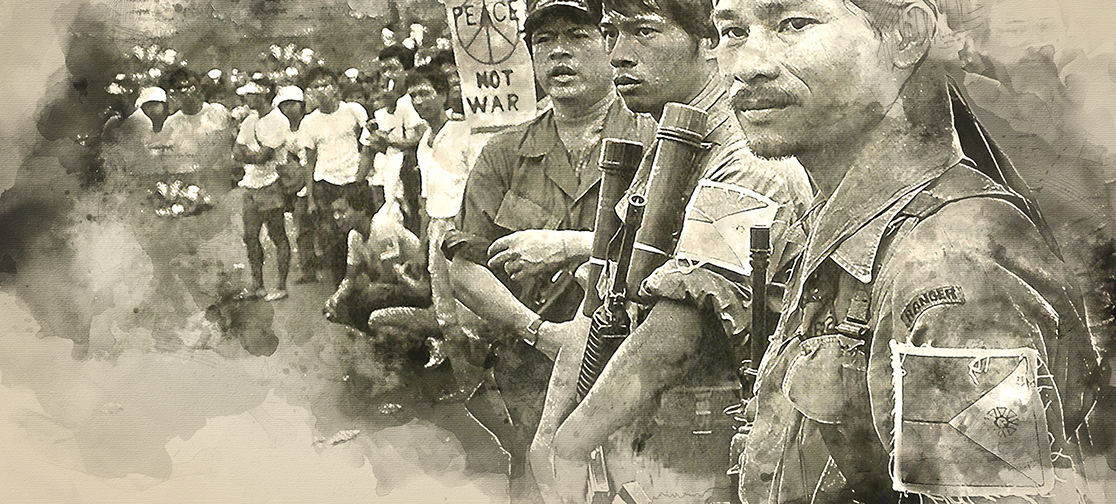
Matapos ang EDSA 1, marami sa mga nagtortyur na ito, dahil lang sila ay sumabit sa EDSA ay sila ay nanatili sa puwesto, hindi nanagot at naging matatas na opisyal pa ng pamahalaan.
"In fact, napo-promote pa. In fact, matapos ang EDSA 1, marami sa mga nagtortyur na ito, dahil lang sila ay sumabit sa EDSA ay sila ay nanatili sa puwesto, hindi nanagot at naging matatas na opisyal pa ng pamahalaan."
During Martial Law, 70,000 people were imprisoned, 34,000 were tortured and 3,240 were killed, according to Amnesty International.
Martial rule was formally ended on Jan. 17, 1981 through Proclamation No. 2045. The dictatorship, however, would go on until Feb. 25, 1986. — Philstar.com NewsLab

